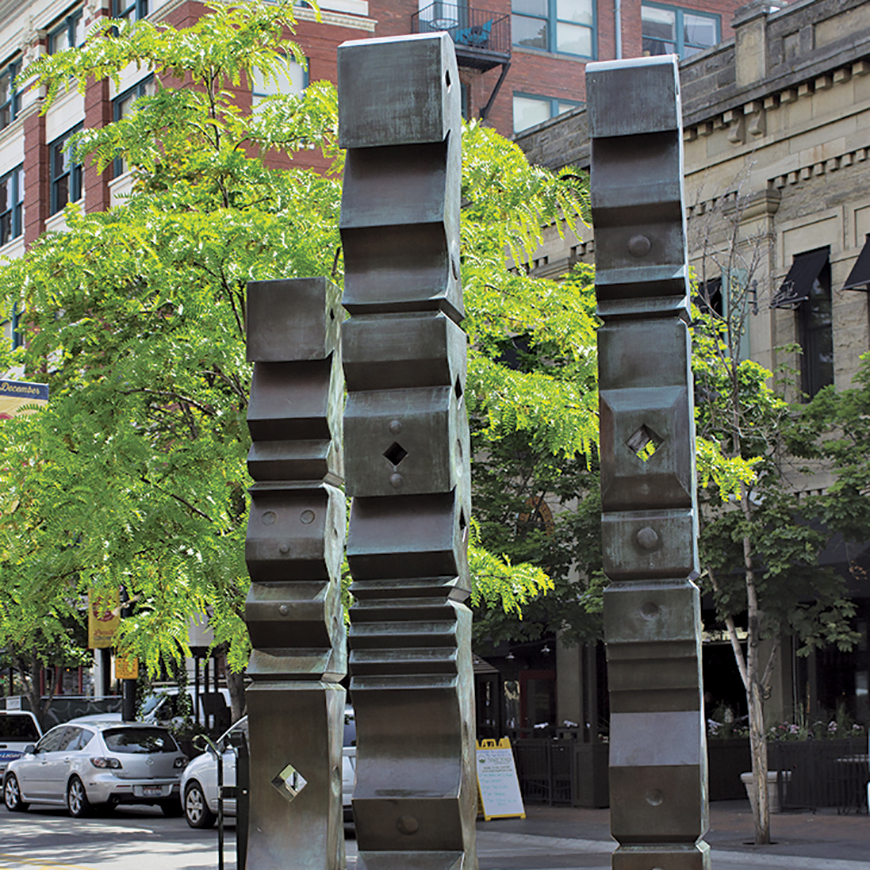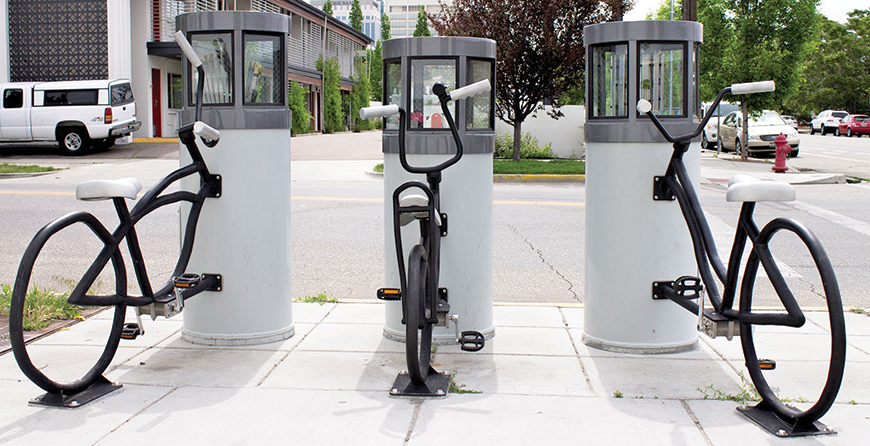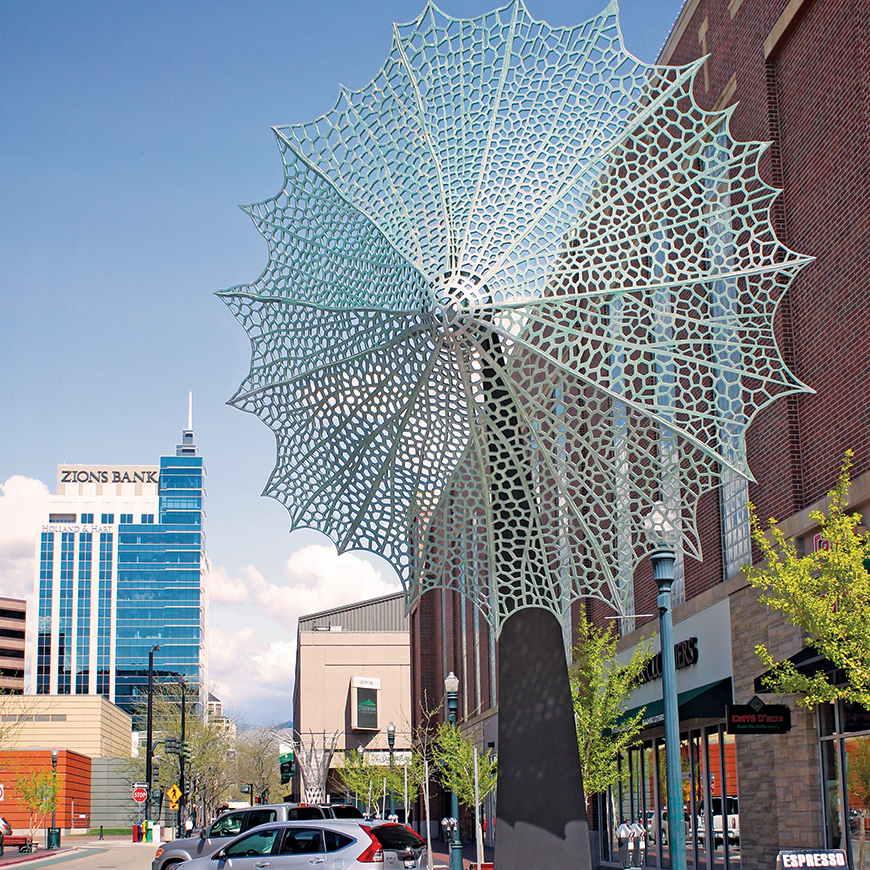When you think of public art, the first image that pops up is often some amorphous blob surrounded by concrete—what author Tom Wolfe referred to as the “turd in the plaza” school of art. But Boise wants its public art to be different by taking into consideration the location and context.
Altogether, Boise has 761 artworks in city-owned collections and 325 site-based public art installations.
Like many cities, Boise devotes a percentage of coffers each year to showcasing public art, explained Karl LeClair, now in his third year as public art program manager for the city of Boise. Since 1997, Boise has awarded $1.275 million among 421 grants. The airport, public works, and urban renewal agency also have public arts funds and projects.
But unlike many cities, Boise devotes money to maintaining its art as well. Of the hard costs of the city’s annual capital construction projects, 1.4 percent is devoted to public art: 1 percent to building it and 0.4 percent to maintaining it. “A lot of programs just develop the ordinance, run off and fund works, and are now grappling with the problem of an aging collection,” he said.
In addition to beautifying the city, public art attracts and helps supports artists and the artistic community, said LeClair. Further, it promotes tourism and economic vitality. “There are neighborhoods that are very excited about the inclusion of public art, because they’re wanting that vitality and that influence of artists,” he noted. “It establishes that character of place, that sense of identity.”

“Boise Totems” by Rod Kagan at W. Idaho and N. 8th streets. Photo courtesy Boise City Department of Arts and History.
Boise also makes it easy to work with artists, according to Ward Hooper, who is known for his iconic Idaho posters. His Boise public art projects include the two flags that anchor each side of the Basque Block, as well as some historic pieces in front of the former Blues Bouquet on Main Street and the small plaques that adorn Boise’s geothermal public buildings.
Hooper credits a Boise arts grant he received in 2003 for bus stop posters for kicking off his career and his style. “That was when I was trying to get public recognition, so it really helped me and let people see what kind of work I did,” he said. “It’s great for emerging and younger artists who want to get something in the public eye.” And the city also helps with the execution, he added. “There are people there who will help you all along the way. You’re just the designer and the person who oversees it.”
One of Boise’s most popular public arts projects is “box wrapping,” for which it hires artists to develop posters that wrap around utility boxes. Boise is adding 30 wraps: 27 new ones and three to replace ones from the early days of the project that have deteriorated. “They have a five-year lifespan, and some are in pretty good condition at the 10-year mark,” LeClair said.
And, sadly, sometimes public art does have to go away, or be “deaccessioned,” LeClair remarked. “Deaccession is something that must be dealt with when managing a collection.” For example, Boise recently had to deaccession a mosaic on a city street when frost and moisture cracked the subsurface and it couldn’t hold up to the traffic. “Surface wear and vehicles are not the best destinations for an artwork,” he said.
Developing a piece of public art can take as much as six months, according to LeClair. First, the city talks with the stakeholders in the area of a proposed project to get details about the location and the context they’d like the artist to address. Then the city puts out calls to artists, who meet with the stakeholders to determine more details. “We’re establishing loose parameters around the location, theme, and context,” LeClair said. “For example, it’ll be a sculpture, but will it be steel? Bronze? 30 feet tall? 30 feet wide?”

“Bike Trio” by Michael Brown and David Cole at S. 14th Street. Photo courtesy Boise City Department of Arts and History.
From there, the city develops a request for qualifications (RFQ) that asks artists for their resume, examples of past work, and what public art they’ve worked on. From that RFQ, three to five artists are put on contract and paid for the design phase. The artists then reach out to the stakeholder group and develop design concepts. The arts staff decides who to work with and gains approval from the Boise Arts and History Commission and the Boise City Council.
Ultimately, public art offers Boise the opportunity to make a statement and differentiate itself from every other city. “There’s an appeal for public art wherever it is,” Hooper said. “The public art piece by my building, I see teenagers taking selfies in front of it all the time. Freak Alley isn’t considered public art, but it’s a huge draw, with tourists on a daily basis. People respond to it well if it’s interesting and not like something you’ll get in another city.”
Where to Find It
Boise makes its public art easy to find. There’s a website at https://www.boiseartsandhistory.org/explore/map/#/search that lets you look in specific neighborhoods, for specific categories, or specific types of art. In addition, there’s a number of brochures, available from City Hall, that have maps and pictures of the top 10 or so public art pieces in each of the neighborhoods. The idea is to give people a taste and then drive them to the website for more information, LeClair said.
What’s LeClair’s favorite? That would be the three Boise Chinatown viewers created by Dwaine Carver in 2001. Two are on Capitol Boulevard and one is on the Grove Plaza. “They’re scenic viewers but in locations where you wouldn’t find a scenic view,” he said. When you look through the lenses, you see a historic photograph specific to its site of Boise’s Chinatown, which was largely shut down in the 1930s. In addition, the poles themselves have information and a map about historic Chinatown. “We’re reinserting that historic narrative back into the contemporary fabric of the city,” he said. “You have to choose to engage with it. It’s not something that hits you on the head.”

